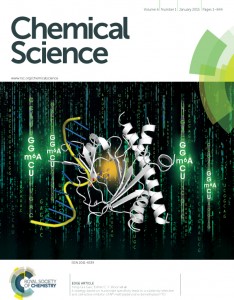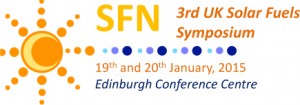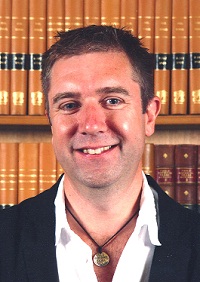
Call for oral abstracts – deadline 27 April 2015
We invite you to join us at Challenges in Chemical Renewable Energy (ISACS17), which will be held in Rio de Janeiro, Brazil from 8-11 September 2015.
This conference will bring together leading scientists from across the world to share scientific developments in renewable energy generation and storage. The broad subject scope will provide an excellent overview of some of the key challenges within cutting edge aspects of this important, fast-moving research field, with plenty of opportunities for networking.
Themes include:
- Solar Fuels and molecular catalysis
- Photovoltaics
- Biofuels
- Battery technology and energy storage
- Fuel cells
Submit your abstract today via our submission system.
You can find more details about submitting your abstract here.
Invited speakers:
James Durrant, Imperial College London, United Kingdom
Eduardo Falabella, Federal University of Rio de Janeiro and PETROBRAS, Brazil
Marc Fontecave, Collège de France, France
Ernesto R. Gonzalez, University of São Paulo, Brazil
Can Li, Dalian Institute of Chemical Physics, China
Daniel Nocera, Harvard University, United States
Erwin Reisner, University of Cambridge, United Kingdom
Keith Waldron, Institute of Food Research, United Kingdom
Karen Wilson, Aston University, United Kingdom
 The ISACS symposia are organised in partnership with Chemical Science. From 2015 all our content is Open Access so you can check out some of the latest freely accessible research in the broad field of Chemical Renewable Energy today:
The ISACS symposia are organised in partnership with Chemical Science. From 2015 all our content is Open Access so you can check out some of the latest freely accessible research in the broad field of Chemical Renewable Energy today:
Reversible photo-induced trap formation in mixed-halide hybrid perovskites for photovoltaics
Eric T. Hoke, Daniel J. Slotcavage, Emma R. Dohner, Andrea R. Bowring, Hemamala I. Karunadasa and Michael D. McGehee
DOI: 10.1039/C4SC03141E
Long-lived charge carrier generation in ordered films of a covalent perylenediimide–diketopyrrolopyrrole–perylenediimide molecule
Patrick E. Hartnett, Scott M. Dyar, Eric A. Margulies, Leah E. Shoer, Andrew W. Cook, Samuel W. Eaton, Tobin J. Marks and Michael R. Wasielewski
DOI: 10.1039/C4SC02551B
Ultrafast delocalization of excitation in synthetic light-harvesting nanorings
Chaw-Keong Yong, Patrick Parkinson, Dmitry V. Kondratuk, Wei-Hsin Chen, Andrew Stannard, Alex Summerfield, Johannes K. Sprafke, Melanie C. O’Sullivan, Peter H. Beton, Harry L. Anderson and Laura M. Herz
DOI: 10.1039/C4SC02424A
Oxygen evolution on well-characterized mass-selected Ru and RuO2 nanoparticles
Elisa A. Paoli, Federico Masini, Rasmus Frydendal, Davide Deiana, Christian Schlaup, Mauro Malizia, Thomas W. Hansen, Sebastian Horch, Ifan E. L. Stephens and Ib Chorkendorff
DOI: 10.1039/C4SC02685C
Metal oxidation states in biological water splitting
Vera Krewald, Marius Retegan, Nicholas Cox, Johannes Messinger, Wolfgang Lubitz, Serena DeBeer, Frank Neese and Dimitrios A. Pantazis
DOI: 10.1039/C4SC03720K
Computational design of molecules for an all-quinone redox flow battery
Süleyman Er, Changwon Suh, Michael P. Marshak and Alán Aspuru-Guzik
DOI: 10.1039/C4SC03030C
A noble metal-free proton-exchange membrane fuel cell based on bio-inspired molecular catalysts
P. D. Tran, A. Morozan, S. Archambault, J. Heidkamp, P. Chenevier, H. Dau, M. Fontecave, A. Martinent, B. Jousselme and V. Artero
DOI: 10.1039/C4SC03774J
A facile route to electronically conductive polyelectrolyte brushes as platforms of molecular wires
Karol Wolski, Michał Szuwarzyński and Szczepan Zapotoczny
DOI: 10.1039/C4SC04048A
Catalysis of water oxidation in acetonitrile by iridium oxide nanoparticles
Jonnathan C. Hidalgo-Acosta, Manuel A. Méndez, Micheál D. Scanlon, Heron Vrubel, Véronique Amstutz, Wojciech Adamiak, Marcin Opallo and Hubert H. Girault
DOI: 10.1039/C4SC02196G
Tandem redox mediator/Ni(II) trihalide complex photocycle for hydrogen evolution from HCl
Seung Jun Hwang, David C. Powers, Andrew G. Maher and Daniel G. Nocera
DOI: 10.1039/C4SC02357A
Durable hydrogen evolution from water driven by sunlight using (Ag,Cu)GaSe2 photocathodes modified with CdS and CuGa3Se5
Li Zhang, Tsutomu Minegishi, Mamiko Nakabayashi, Yohichi Suzuki, Kazuhiko Seki, Naoya Shibata, Jun Kubota and Kazunari Domen
DOI: 10.1039/C4SC02346C
Magnetic MOF microreactors for recyclable size-selective biocatalysis
Jia Huo, Jordi Aguilera-Sigalat, Samir El-Hankari and Darren Bradshaw
DOI: 10.1039/C4SC03367A
We hope you can join us for Challenges in Chemical Renewable Energy (ISAC17). Claudio Mota, Roberto Torresi and the rest of the Scientific Committee look forward to welcoming you and your colleagues to Rio de Janeiro!
 Chemical Science and Energy & Environmental Science were delighted to sponsor the Postgraduate Solar Fuels Symposium which took place in Edinburgh last month.
Chemical Science and Energy & Environmental Science were delighted to sponsor the Postgraduate Solar Fuels Symposium which took place in Edinburgh last month.













 Biography
Biography